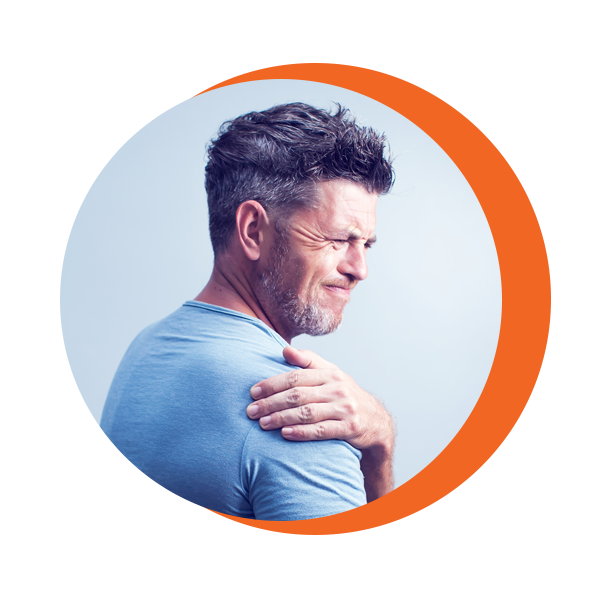While shoulder pain can affect anyone, athletes who compete in sports with repetitive overhead motions, like tennis, baseball, swimming and volleyball are especially susceptible to shoulder injury. With a complex connection of muscles, ligaments, tendons and nerves, the shoulder offers a wide range of motion and flexibility. While this is great for athletic and daily movement, the shoulder’s increased mobility makes it prone to a variety of injuries and problems with instability.


The shoulder is a ball-and-socket joint with intricate structures that can cause pain if they don’t function properly.
The rotator cuff is a collection of muscles and tendons that cover the head of the humerus, forming a cuff over the shoulder. When the rotator cuff tear occurs, the tendons are ripped away from the bone, either partially or entirely.
Partial-thickness and full-thickness tears happen in either two ways:
Partial rotator cuff tears may be treatable with physical therapy alone. However, surgery may be recommended when symptoms have persisted for over six months, if the tear is larger than three centimeters, if you are a competitive athlete, or if there is a significant loss of shoulder function.
Surgery can be an open repair or a more minimally invasive procedure utilizing an arthroscope. Following any kind of rotator cuff surgery, you will need to manage your pain, care for the incision site and complete rehabilitation exercises with a physical therapist.
Frozen shoulder, also called adhesive capsulitis, can cause pain and stiffness in the shoulder that makes movement very difficult or uncomfortable. There are three stages to a frozen shoulder.
The primary treatment option for a frozen shoulder is physical therapy with a focus on shoulder flexibility, with nonsteroidal anti-inflammatory drugs (NSAIDs) to relieve pain and inflammation in the joint. If physical therapy does not work, your doctor may recommend a corticosteroid injection or joint distension.
The labrum is a ring of cartilage that lines and reinforces the shoulder joint to promote stability. When injured, the labrum can cause a partial or complete shoulder dislocation, as well as a significant amount of pain. Labral tears often occur in sports with overhead motions due to repetitive stress, from an acute traumatic injury, or due to natural aging.
There are two kinds of labral tears:
Depending on the degree of the tear, labral tears can heal with rest, anti-inflammatory medications and physical therapy. In severe cases, surgery may be required to eliminate pain and restore normal function.
Tendonitis is the inflammation or irritation of a tendon. In the shoulder, this condition can often occur in the rotator cuff or in the bicep tendon, usually from being pinched by nearby structures. Tendonitis is most common in overhead sports due to repetitive use.
Symptoms of tendonitis include:
Fortunately, physical therapy may reduce many of the symptoms associated with shoulder pain. Whether you are an elite athlete or a weekend warrior, our certified doctors of physical therapy are ready to help you regain mobility and live pain-free.
Fill out the form below and we will get back to you shortly on scheduling your appointment date!

CONTACT:
833-4 WE HEAL (833-493-4325)
Fax: 833-918-2233
[email protected]
WORKING HOURS:
Monday – Friday
8:00AM – 5:00PM